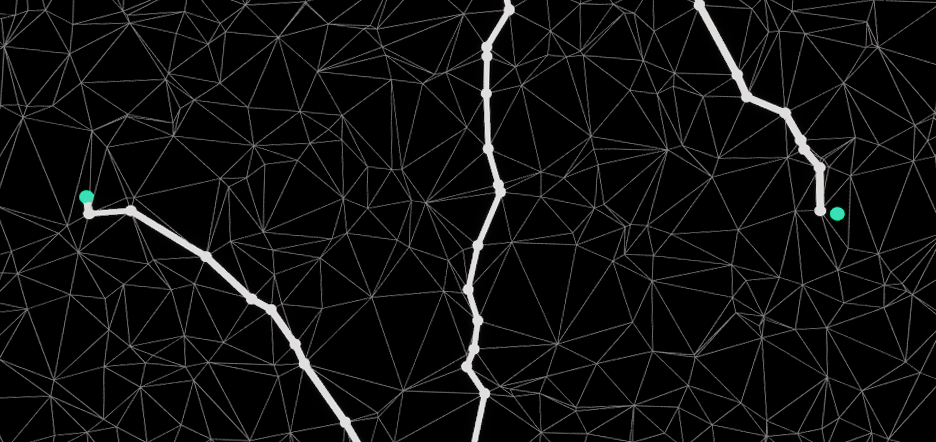Related
Table of content
The Plot Edges Pathfinding node takes multiple input dataset as “plot” and finds a path that connects each point in a given plot, in order. It’s very straightforward to use, and should generally be preferred over its Edges Pathfinding alternative.

Properties
| Property | Description |
|---|---|
| Plot inclusiong | |
| Add Seed to Path | Prepends the seed position at the beginning of the output path. This will create a point with the position of the seed. |
| Add Goal to Path | Appends the goal position at the end of the output path. This will create a point with the position of the goal. |
| Add Plot Points to Path | Include plot points positions as part of the output path. Does not includes seed or goal points. |
| Closed Loop | Whether the plots should generate closed paths. If enabled, the last plot point will create a path that wraps with the first plot point. |
| Path Composition | Whether the output paths are made from Vtx or Edges points. |
| Picking | |
| Seed Picking | Lets you control how the seed node (Vtx) will be picked based on the provided seed position. |
| Goal Picking | Lets you control how the goal node (Vtx) will be picked based on the provided goal position. |
| Search Algorithm | Let you pick which |
Seed/Goal picking is resolved for each pair of point in a given plot.
| Misc | |
| Use Octree Search | Whether or not to search for closest node using an octree. Depending on your dataset, enabling this may be either much faster, or much slower. I highly recommend enabling it if you resolve a lot of paths at the same time, but as a rule of thumb just profile it with/without and pick what works best in your setup. |
| Omit Complete Path on Failed Plot | If enabled, a single seed/goal pair fail will invalidate the full plotted path. If disabled, failed segments will ungracefully connect plot points with a straight line. |
| Tagging | |
| Is Closed Loop Tag | If enabled, will tag closed loop paths data with the specified tag. |
| Is Open Path Tag | If enabled, will tag open paths data with the specified tag. |
Available  ⊚ Search modules
⊚ Search modules
Available  🝰 Heuristics modules
🝰 Heuristics modules
🝰 Heuristic Attribute
Attribute-driven heuristics
The Attribute heuristics uses custom point or edge value as raw score.
🝰 Feedback
Favor uncharted points & edges.
The Feedback heuristic add/remove score value to points & edges that are “in use” by other previously computed paths.
🝰 Inertia
Favor active direction preservation.
The Inertia heuristic uses the ongoing traversal data to try and maintain a consistent direction, as if the algorithm had “inertia”.
🝰 Steepness
Favor flat trajectories.
The Steepness heuristic uses the edge angle against an up vector to compute a dot product that is used to determine whether the edge should be considered flat or not.
🝰 Azimuth
Favor edges directed toward the goal.
The Azimuth heuristic attempt to force the path to always aim toward the goal.
🝰 Least Nodes
Favor traversing the least amount of nodes.
The Least Nodes heuristic favor node count traversal over anything else.